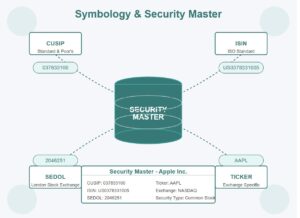Home Education center Core Concepts and Fundamentals for Direct Indexing
Core Concepts and Fundamentals for Direct Indexing
Table of Contents:
Core Concepts and Fundamentals for Direct Indexing
In order to properly leverage Direct Indexing, one must first understand its core components. These range from the structural elements that define account construction to the critical success factors that ensure its effectiveness over time. By breaking down these key aspects, investors can gain a clearer picture of how Direct Indexing functions and why it has become a preferred strategy for many.
Direct Indexing Fundamentals: Tax Efficiency, Customization, and Portfolio
What Is Direct Indexing? How It Works and Why It Matters
One of the hallmarks of Direct Indexing is investing through individual security ownership rather than pooled investment vehicles like mutual funds or ETFs. Unlike pooled vehicles, where the investor owns shares of a fund that aggregates multiple securities, Direct Indexing provides an unprecedented level of control over one’s investment portfolio. This granular access allows for more personalized investment strategies, ensuring that investors can tailor their holdings to meet specific financial goals.
Fractional Share Capability Requirement
To facilitate diverse portfolios, especially for smaller accounts, the ability to purchase fractional shares is absolutely critical. Fractional shares allow investors to approximate the proportions of an index even when large-cap stocks are involved. Without the need for a significant capital outlay, investors can build well-diversified portfolios that align with both their objectives and industry benchmarks. This feature is particularly beneficial when engaging in intricate customizations, such as ESG-aligned investments or factor-tilted portfolios.
Systematic Tracking of Benchmark Indexes
Tracking a benchmark index is a fundamental requirement for maintaining the integrity of Direct Indexing strategies. This process involves systematic adjustments to ensure the portfolio continues to reflect the index’s composition and weightings. To achieve this, Direct Indexing platforms often employ advanced algorithms that efficiently accommodate additions, deletions, and weight changes within an index. As a result, investors can be confident that their portfolios remain in sync with broader market movements.
Account-Level Customization Capabilities
One of the biggest advantages of Direct Indexing is its ability to offer account-level customization. Investors can tailor their portfolios to individual preferences, whether that means excluding specific sectors, incorporating ESG criteria, or aligning investments with religious or ethical values. Unlike traditional fund-based investments, which offer limited customization, Direct Indexing ensures that every portfolio is uniquely aligned with an investor’s financial and personal objectives.
How Direct Indexing compares to ETFs and mutual funds
Another crucial aspect of Direct Indexing is its superior tax lot management. This feature enables investors to strategically manage capital gains by selectively selling securities at a loss, a process known as tax-loss harvesting. Unlike mutual funds or ETFs, which do not provide control over individual tax lots, Direct Indexing allows for a far more sophisticated approach to tax optimization. Consequently, investors can maximize after-tax returns while minimizing their tax burden.
Rebalancing and Optimization Frameworks
Regular rebalancing is essential for maintaining alignment with an investor’s target index while also managing risk. However, finding the right balance between tracking error, turnover, and associated costs is key. By leveraging advanced computational techniques, Direct Indexing platforms can identify optimal rebalancing schedules. This ensures that portfolios remain closely aligned with designated benchmarks without incurring unnecessary transaction costs.
Portfolio Customization: The Power of Direct Indexing
Index Selection and Tracking Methodology
Choosing the right index is a foundational step in Direct Indexing. Investors must carefully consider several factors, including industry exposure, risk levels, and underlying investment philosophies. Additionally, tracking methodologies must be robust and efficient, utilizing technology to mirror the index’s composition while also incorporating opportunities for tax optimization and personalization.
Portfolio Construction Techniques
A well-constructed portfolio is the cornerstone of any successful Direct Indexing strategy. Effective portfolio construction considers multiple factors, including investor risk tolerance, tax implications, and personal preferences. A strong diversification approach, along with proper weighting and risk management, ensures that the portfolio remains resilient in various market conditions.
Trading and Execution Strategies
For Direct Indexing to be cost-effective, trading and execution strategies must minimize costs while maximizing price efficiency. By employing sophisticated trading algorithms, investors can reduce market impact and optimize execution quality. This is particularly important during periods of high market volatility, where efficient trading ensures portfolios remain stable and aligned with the intended strategy.
Tax Management Capabilities
One of the most compelling reasons investors choose Direct Indexing is its ability to enhance tax efficiency. By systematically implementing tax-loss harvesting and maintaining meticulous tax lot records, advisors can significantly reduce taxable gains. As a result, investors can enjoy higher after-tax returns while benefiting from improved portfolio performance over time.
Risk Management Controls
Managing risk effectively is critical for maintaining long-term investment success. Direct Indexing allows for enhanced risk controls by enabling exposure adjustments across sectors, geographies, and asset classes. This ensures that portfolios remain within acceptable variance levels while maintaining alignment with default benchmarks.
Technology Infrastructure Requirements
Technology serves as the backbone of any successful Direct Indexing strategy. A robust technology infrastructure, complete with real-time analytics, automation tools, and tax-optimization features, enables investors to make informed, data-driven decisions. Selecting the right platform is essential for streamlining operations and enhancing overall portfolio efficiency.
Performance Measurement Standards
To evaluate the success of Direct Indexing, precise performance measurement standards must be established. These measures validate whether portfolios are achieving their intended outcomes while conforming to benchmark expectations. By continuously analyzing performance, investors can make data-driven decisions to adjust and optimize their portfolios accordingly.
Primary Benefits
✅ Tax-Loss Harvesting at the Security Level – Allows investors to offset capital gains with losses on individual securities, reducing tax liabilities and improving net returns.
✅ Portfolio Customization Flexibility – Enables investors to align portfolios with personal values, such as ESG factors, sector exclusions, or factor-based strategies.
✅ Direct Ownership of Securities – Grants investors voting rights and greater influence over corporate governance decisions.
✅ Tax-Efficient Charitable Giving – Facilitates direct stock donations, minimizing capital gains tax while maximizing philanthropic impact.
✅ Cost Basis Control – Allows investors to strategically manage their tax exposure by controlling when and how securities are sold.
Critical Success Factors
To successfully implement Direct Indexing, investors must consider several key factors:
✔ Minimum Account Size Considerations – Ensure the portfolio justifies the complexity and cost of individualized management.
✔ Trading Cost Management – Optimize transactions to reduce expenses and preserve returns.
✔ Tracking Error Control – Keep tracking error within acceptable levels to maintain index adherence.
✔ Rebalancing Frequency Optimization – Balance accuracy and cost efficiency to optimize investment outcomes.
✔ Cash Flow Management – Maintain liquidity while strategically deploying capital for tax efficiency.
✔ Corporate Action Processing – Adjust for stock splits, dividends, and spin-offs to maintain accurate portfolio tracking.
Implementation Considerations
🔹 Custodial Relationships – Choosing the right custodial partners ensures smooth account management.
🔹 Technology Platform Selection – Opt for a platform with integrated tax optimization and trading execution.
🔹 Index Licensing Requirements – Ensure compliance with index licensing regulations.
🔹 Client Onboarding Process – Streamline onboarding to enhance investor experiences.
🔹 Ongoing Maintenance Procedures – Establish a structured workflow for continued portfolio optimization.
Final Thoughts
Direct Indexing is a game-changer in modern investment management, offering unparalleled tax advantages, customization flexibility, and cost-efficient strategies. By understanding the core structural elements, essential components, and critical success factors, investors can leverage Direct Indexing to enhance their portfolio’s efficiency and long-term success.
Related Articles
- Trading Infrastructure for Direct Indexing
- Rebalancing Strategies and Best Practices in Direct Indexing
- About us
- What is Direct Indexing: A Comprehensive Introduction
- Optimized vs Traditional Portfolio Rebalancing
- https://www.morganstanley.com/articles/what-is-direct-indexing-benefits#:~:text=Direct%20indexing%20is%20a%20strategy,with%20losses%20from%20other%20positions.
Offer personalized experiences for every client at scale




